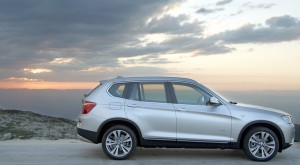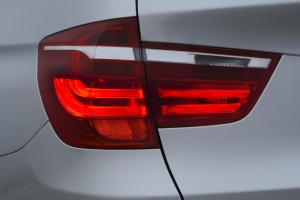It’s not surprising that BMW’s X3 xDrive35i loves to stretch its legs on the freeways and highways. After all, it was bred on Germany’s silky smooth and – in some places – speed limit-free Autobahn.
In that arena, the twin-turbo inline six provides effortless acceleration, there’s plenty of room for everyone and the X3’s many luxury features coddle occupants.
So why does its personality completely change around town where it feels like a pit bull straining its leash?
The first-generation X3 was roundly criticized for its punishing ride and, in retrospect, the automaker admitted that the interior wasn’t as good as it should have been, either.
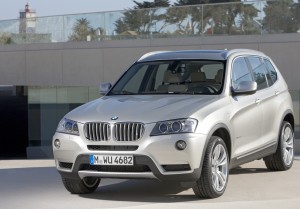
The X3 is a pleasure on the freeway, but overly aggressive suspension and transmission tuning make it rough around town.
There are no complaints about the new model’s interior trim, which – in the $52,025 test vehicle – was appropriately luxurious.
But about that suspension. BMW still hasn’t gotten it right. Around town, BMW’s smallest sport ute makes every road imperfection felt and it bounces occupants over disheveled roads.
On top of that, the transmission doesn’t help matters. Throttle transitions are too sharp, causing more head-snapping around town. Blame the tuning of the eight-speed automatic’s torque converter.
Even the brakes make smooth stops difficult because they are difficult to modulate under light braking.
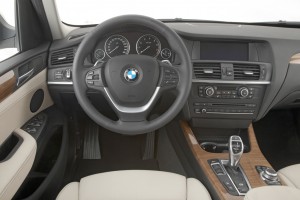
BMW thought that the interior of the original X3 wasn't up to its standards, but there's no complaints about the interior in the current vehicle.
It’s too bad, because there’s a lot here to like. BMW has always made some of the sweetest engines and this twin-turbo 3.0-liter is no exception. The 300-horsepower mill is as smooth any engine on the market. Under part throttle, there’s an expensive-sounding exhaust growl. Straight sixes are simply the best layout short of a V-12 for a piston engine, which is why BMW continues to build them.
The new eight-speed automatic transmission, the only transmission offered in the X3, shifts very smoothly, whether in automatic, sport mode or manual. But shifts are not the problem with this transmission. At slower speeds, any touch of the throttle causes the car to lurch.
In fact, some occupants said the transmission felt like a manual – with its direct connection to the engine – rather than a traditional torque-converter auto.
All of those complaints disappear at speed. Whether on the freeway or two-lane highways, the X3 is truly in its element. There’s plenty of power to get around slower-moving traffic, the transmission is quick to provide the right gear and the agile suspension is composed on twisty roads. The X3 weighs more than 4,200 pounds, but it feels much smaller.
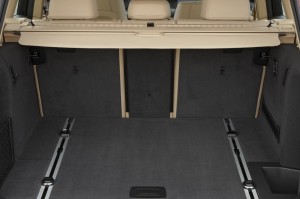
The X3's cargo area is beautifully finished with an optional track and cleat, just in case you want to take your SUV to the racetrack, but don't want to remove your luggage while circling the track.
The interior is a delight – mostly. The Oyster Nevada leather has a nice bumpy texture. The wide seats are long-haul comfortable. The back seats, once another X3 demerit, are now a huge positive with cross-your-legs room to go with enough headroom to wear your headwear for silly hat day. And that’s with the optional panoramic sunroof.
The cupholders – always a source of irritation for European automakers where the idea of sipping a Snapple while driving just isn’t something they do – feel chintzy and are relunctant to let go of shaped bottles such as a Coke.
BMW has also improved its infotainment system controls significantly. Buttons around the center control knob allow quick access to systems such as the radio, navigation and phone. Still, some controls would seem to be missing. For example, there’s a center-stack button for AM/FM, but no way to choose Sirius satellite radio without diving into the menu system.
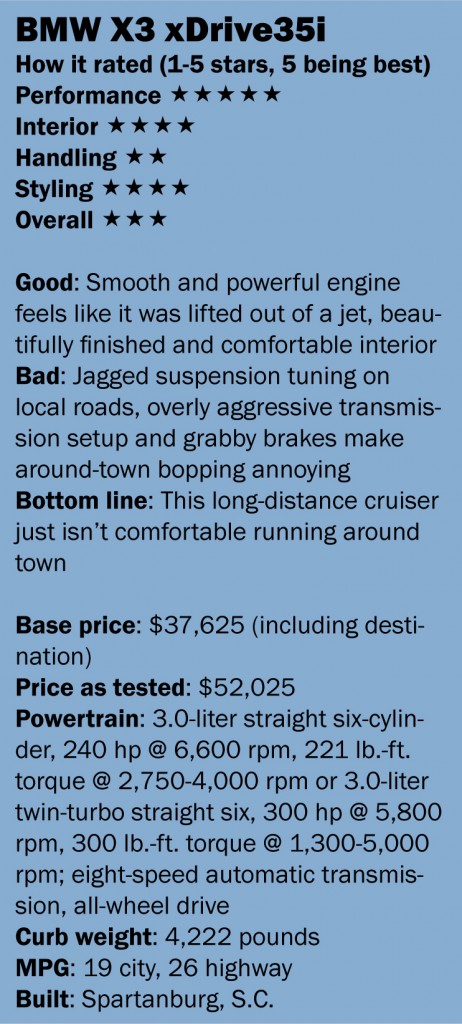 The X3 also offers two sport modes that firm up the ride even more, alter the stability control and traction control settings and change other settings for sporty driving.
The X3 also offers two sport modes that firm up the ride even more, alter the stability control and traction control settings and change other settings for sporty driving.
And if it’s a sports car handling you’re looking for, the X3 delivers. You have to remind yourself that you’re driving an SUV – umm, BMW actually wants us to call it an SAV or sport activity vehicle – instead of BMW’s 3-Series sports sedan. Even if BMW hasn’t quite figured out how to impart its legendary steering feel with the new electric power steering, the X3 is a joy to drive fast.
The xDrive all-wheel-drive system – standard on all X3s – sends extra power to the outside wheels in turns. Wheelspin? Never.
The X3’s styling is an evolution of its predecessor. Maybe the most striking details are the extremely low cowl combined with the long hood.
The base price, $36,625 including destination, for the X3 actually drops $2,100 this year with the addition of the xDrive28i model, which features a 240-horsepower naturally aspirated 3.0-liter six cylinder. The xDrive35i, carrying a base sticker of $41,925, adds a pair of turbos and 60 more horses for 300 even. Here’s a surprise: The hotter turbo motor is rated at 26 mpg on the freeway, compared to 25 for the standard engine.
We saw 24 mpg in mostly freeways and rural two-lanes.
With a laundry list of pricy options – for example, $3,450 for the premium package including universal garage door opener, panoramic sunroof, auto-dimming side and rearview mirrors, lumbar support, storage package and special interior lights – this truck priced out at a staggering $52,025, which seems like a mighty chunk of change for what is supposed to be a small sport ute. In fact, that’s nearly $5,000 more than the base price for big brother X5 xDrive35i.
There may not be a better vehicle on the planet for a cruise up to Michigan’s Up North country. But you have to drive on surface streets to get to those freeways and on that count, the X3 falls short. BMW needs to soften the torque converter tuning, make the brakes a little less grabby and work on the suspension calibration because at slower speeds, the X3 annoys more than it pleases.

